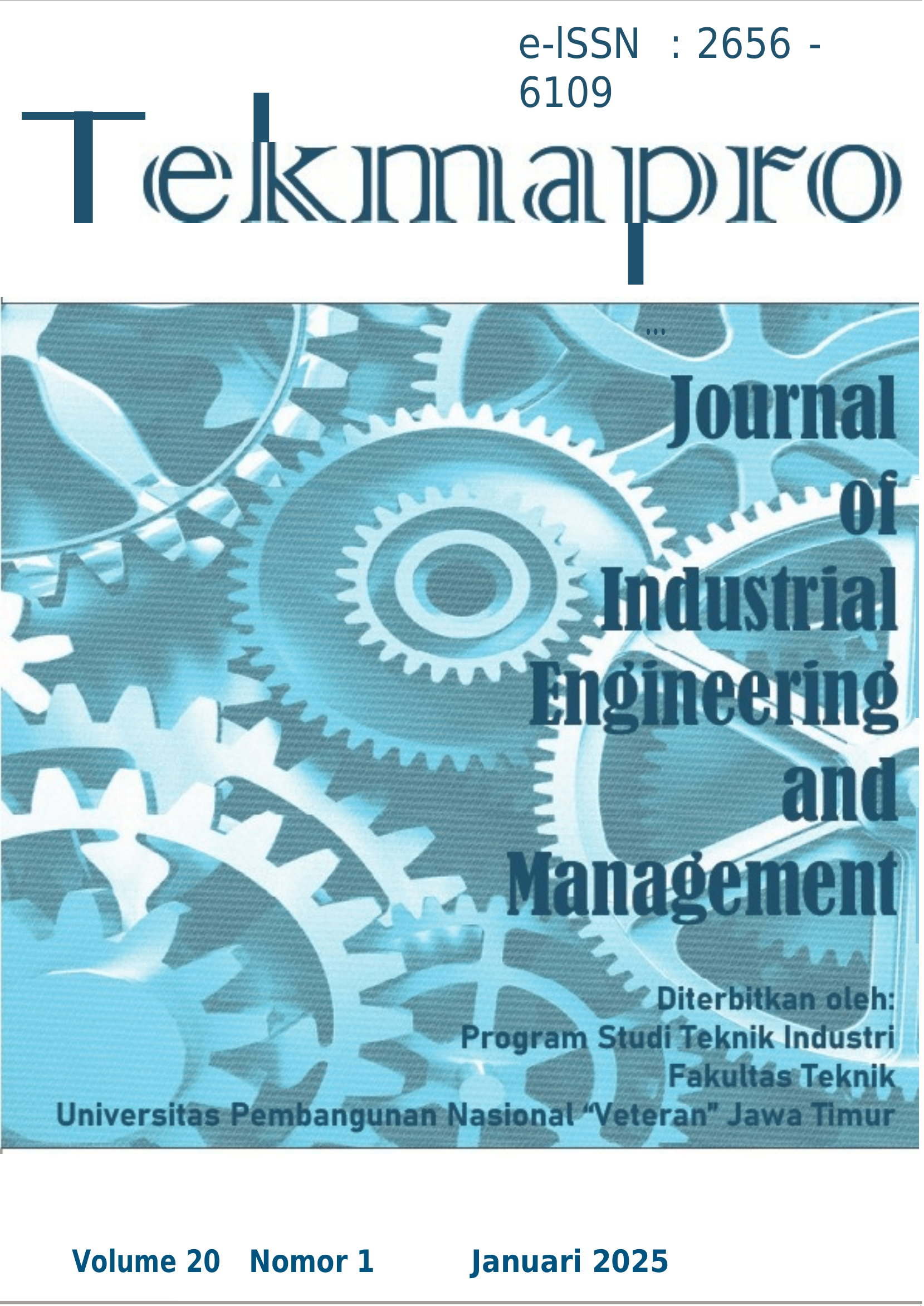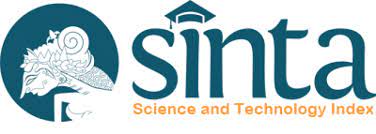A System Dynamics Approach to ERP Adoption in SMEs: A Case Study of Banyumas
Keywords:
ERP Adoption, SME's, System Dynamics, Causal Loop Diagram, BanyumasAbstract
Small and Medium Enterprises (SMEs) are pivotal to economic development, particularly in Indonesia, where they contribute significantly to employment and Gross Domestic Product (GDP). However, the adoption of sophisticated technologies such as Enterprise Resource Planning (ERP) systems remains a challenge due to constraints in resources, resistance to change, and implementation costs. This study applies a system dynamics methodology to develop an ERP adoption model specifically tailored for SMEs in Banyumas. The model synthesizes mental models derived from a comprehensive review of literature and semi-structured interviews with relevant stakeholders, culminating in the creation of a Causal Loop Diagram (CLD). This diagram identifies key feedback loops influencing ERP adoption, including reinforcing loops related to awareness and business benefits, and balancing loops that address implementation challenges such as cost and complexity. The findings underscore the critical role of government support, the development of cost-effective ERP solutions, and the importance of training programs in facilitating ERP adoption. The proposed model provides practical insights for policymakers and ERP providers to enhance digital transformation within SMEs.
Downloads
References
B. Y. P. Simangunsong, “Peluang dan Tantangan Usaha Mikro Kecil dan Menengah (UMKM): Systematic Literature Review,” JUREKA (Jurnal Ekon. Pembangunan), pp. 25–39, 2022.
J. P. Laudon, K. C., & Laudon, Management Information Systems: Managing the Digital Firm. Pearson Education, 2020.
A. Fiby Nur, A. Jihan, S. Lisma Nur, and K. Khusnul, “UMKM Banyumas Go Digital: Pengenalan Aplikasi Open Source Terintegrasi Data Penjualan,” J. Pengabdi. Kpd. Masy., vol. 3, no. 1, pp. 78–83, 2022.
J. Sterman, Business Dynamics: Systems Thinking and Modeling for a Complex World. Boston: McGraw-Hill, 2000.
A. G. Chofreh, F. A. Goni, and J. J. Klemeš, “A roadmap for Sustainable Enterprise Resource Planning systems implementation (part III),” J. Clean. Prod., vol. 174, no. Part III, pp. 1325–1337, 2018.
C. A. Rajan and R. Baral, “Adoption of ERP system: An empirical study of factors influencing the usage of ERP and its impact on end user,” IIMB Manag. Rev., vol. 27, no. 2, pp. 105–117, 2015.
S. Ahmadi, C. H. Yeh, E. I. Papageorgiou, and R. Martin, “An FCM-FAHP approach for managing readiness-relevant activities for ERP implementation,” Comput. Ind. Eng., vol. 88, pp. 501–517, 2015.
M. Fryling, “ERP Implementation Dynamics,” 23rd Int. Conf. Syst. Dyn. Soc., p. 73, 2005.
K.-W. Chuang, “Building a System Dynamics Simulation Model in Support of Erp Project Implementation,” North, vol. 9, 2011.
M. Haddara, S. Gøthesen, and M. Langseth, “Challenges of Cloud-ERP Adoptions in SMEs,” Procedia Comput. Sci., vol. 196, no. 2021, pp. 973–981, 2021.
A. Baykasoğlu and İ. Gölcük, “Development of a two-phase structural model for evaluating ERP critical success factors along with a case study,” Comput. Ind. Eng., vol. 106, pp. 256–274, 2017.
A. Gessa, A. Jiménez, and P. Sancha, “Exploring ERP systems adoption in challenging times. Insights of SMEs stories,” Technol. Forecast. Soc. Change, vol. 195, no. August, 2023.
V. Paulsson and B. Johansson, “Cloud ERP systems architectural challenges on cloud adoption in large international organizations: A sociomaterial perspective,” Procedia Comput. Sci., vol. 219, no. 2022, pp. 797–806, 2023.
M. M. Yang, F. Yang, T. Cui, and Y. C. Cheng, “Analysing the dynamics of mental models using causal loop diagrams,” Aust. J. Manag., vol. 44, no. 3, pp. 495–512, 2019.
K. M. Cyrus, D. Aloini, and S. Karimzadeh, “How to disable mortal loops of enterprise resource planning (ERP) implementation: A system dynamics analysis,” Systems, vol. 6, no. 1, 2018.
A. Lutfi, “Investigating the moderating role of environmental uncertainty between institutional pressures and ERP adoption in Jordanian SMEs,” J. Open Innov. Technol. Mark. Complex., vol. 6, no. 3, p. 91, 2020.
M. Lakdinu, M. M. De Silva, K. Balachandra, and K. P. D. Frank Perera, “Leadership in Change Management Decisions for Successful ERP Implementation - A System Dynamics Perspective,” MERCon 2022 - Moratuwa Eng. Res. Conf. Proc., no. November 2023, 2022.
R. Hrischev, “Modelling and Simulation in the ERP Systems,” vol. 27, pp. 1–11, 2021.
C. F. Nourani and C. Lauth, “Predictive Control, Competitive Model Business Planning, and Innovation ERP,” Procedia Comput. Sci., vol. 65, no. Iccmit, pp. 891–900, 2015.
M. Q. Miranda, J. S. Farias, C. de Araújo Schwartz, and J. P. L. de Almeida, “Technology adoption in diffusion of innovations perspective: introduction of an ERP system in a non-profit organization,” RAI Rev. Adm. e Inovação, vol. 13, no. 1, pp. 48–57, 2016.
M. Haddara and O. Zach, “ERP systems in SMEs: A literature review,” Proc. Annu. Hawaii Int. Conf. Syst. Sci., no. February 2011, 2011.
P. M. Senge, “The Fifth Discipline: The Art and Practice of the Learning Organization: Book review.,” Consulting Psychology Journal: Practice and Research, vol. 45, no. 4. pp. 31–32, 1993.
A. Y. Ramdhani and A. D. Setiawan, “A Conceptual System Dynamics Model of Enhancing Biodiesel Adoption in Indonesia,” in 4th Asia Pacific Conference on Research in Industrial and Systems Engineering 2021, 2022, pp. 169–173.
R. W. Arini, S. Hidayatuloh, D. Ikasari, B. Herdianto, F. I. Putra, and S. K. Sari, “Causal Loop Diagram of Banyumas Tourism Projection with Transportation System Improvement,” J. Tek. Ind., vol. 26, no. 1, pp. 49–60, 2024.
E. Kamyabi, H. Moazzez, and A. Husseinzadeh Kashan, “A hybrid system dynamics and two-stage mixed integer stochastic programming approach for closed-loop battery supply chain optimization,” Appl. Math. Model., vol. 106, pp. 770–798, 2022.
I. A. T. Munikhah and A. Y. Ramdhani, “Scenario Analysis of Indonesian Ferronickel Supply Chain Resilience with System Dynamics,” vol. 24, no. 2, pp. 113–124, 2022.
A. Hidayatno, A. R. Destyanto, and M. Fadhil, “Model conceptualization on e-commerce growth impact to emissions generated from urban logistics transportation: A case study of Jakarta,” Energy Procedia, vol. 156, no. September 2018, pp. 144–148, 2019.
B. Enserink et al., Policy Analysis of Multi-Actor Systems. 2022.










